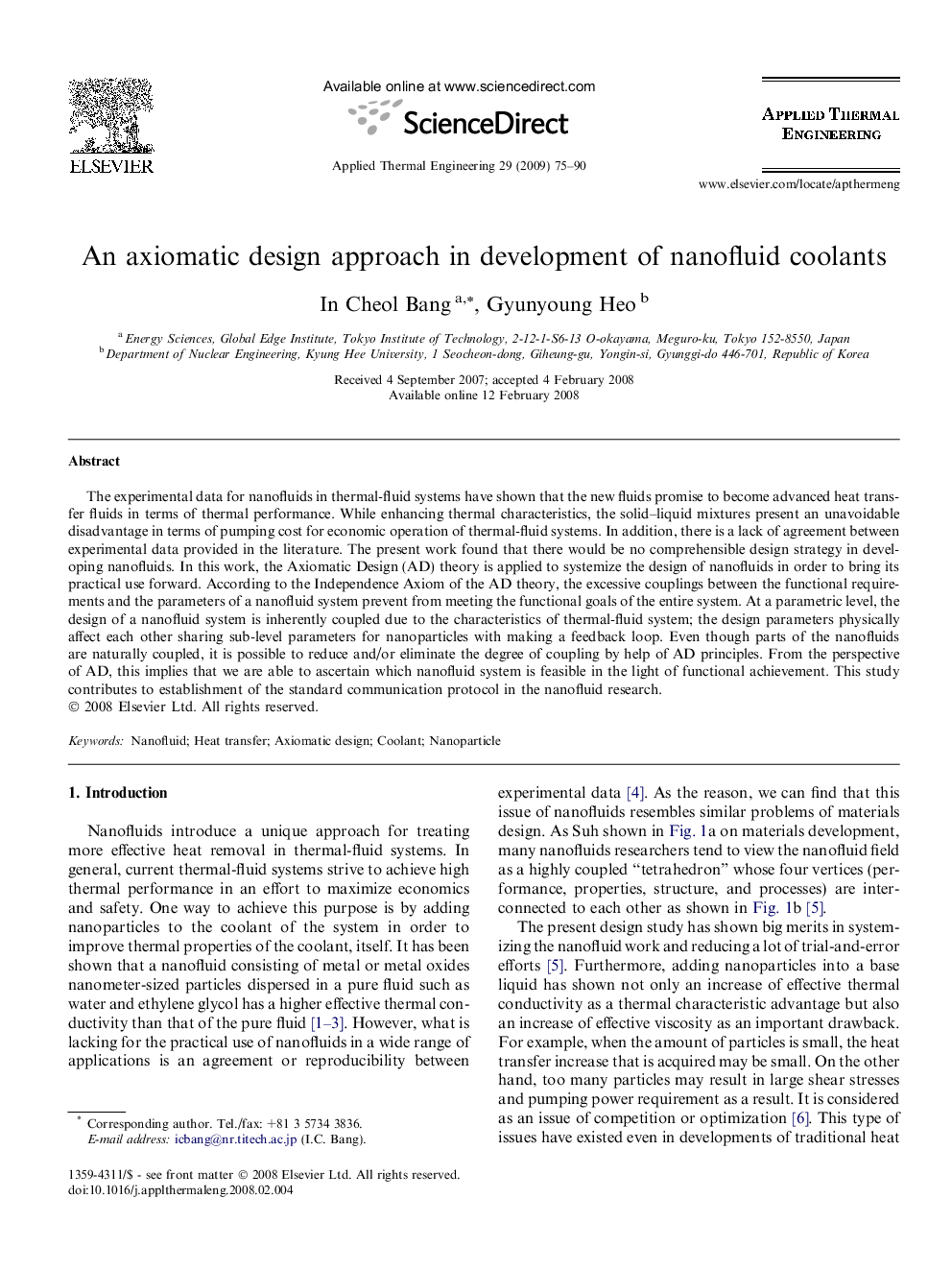| Article ID | Journal | Published Year | Pages | File Type |
|---|---|---|---|---|
| 649099 | Applied Thermal Engineering | 2009 | 16 Pages |
The experimental data for nanofluids in thermal-fluid systems have shown that the new fluids promise to become advanced heat transfer fluids in terms of thermal performance. While enhancing thermal characteristics, the solid–liquid mixtures present an unavoidable disadvantage in terms of pumping cost for economic operation of thermal-fluid systems. In addition, there is a lack of agreement between experimental data provided in the literature. The present work found that there would be no comprehensible design strategy in developing nanofluids. In this work, the Axiomatic Design (AD) theory is applied to systemize the design of nanofluids in order to bring its practical use forward. According to the Independence Axiom of the AD theory, the excessive couplings between the functional requirements and the parameters of a nanofluid system prevent from meeting the functional goals of the entire system. At a parametric level, the design of a nanofluid system is inherently coupled due to the characteristics of thermal-fluid system; the design parameters physically affect each other sharing sub-level parameters for nanoparticles with making a feedback loop. Even though parts of the nanofluids are naturally coupled, it is possible to reduce and/or eliminate the degree of coupling by help of AD principles. From the perspective of AD, this implies that we are able to ascertain which nanofluid system is feasible in the light of functional achievement. This study contributes to establishment of the standard communication protocol in the nanofluid research.
